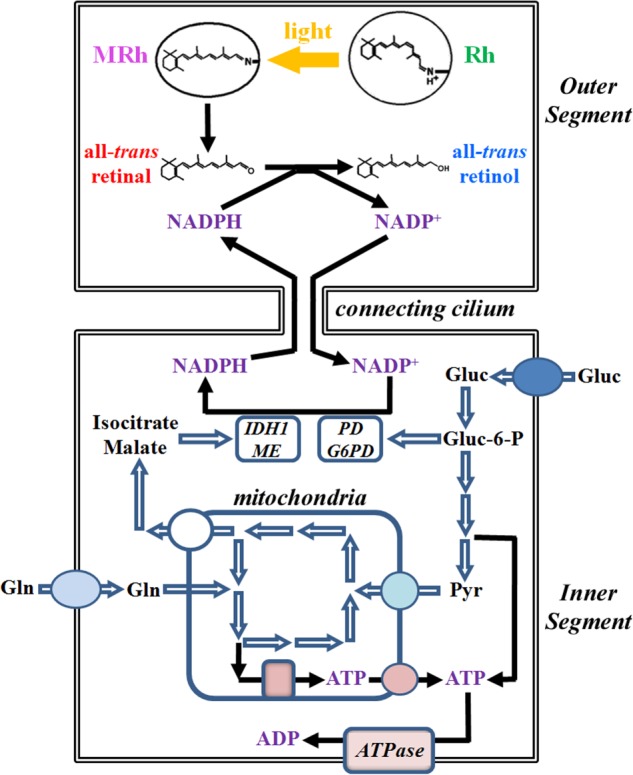FIGURE 1.

Scheme for the generation of NADPH by rod inner segment metabolic pathways utilizing glucose and glutamine as substrates. The generated NADPH is a necessary cofactor for the reduction of retinal to retinol in the rod outer segment. The metabolic substrate for the pentose phosphate pathway is glucose, which can enter the pathway after its phosphorylation to glucose-6-phosphate (Gluc-6-P) by a hexokinase. Through the pentose phosphate pathway, one molecule of glucose generates two molecules of NADPH: one is generated through the oxidation of glucose-6-phosphate to 6-phosphogluconolactone by glucose-6-phosphate dehydrogenase (G6PD), and one more is generated through the oxidative decarboxylation of 6-phosphogluconate to ribulose-5-phosphate by 6-phosphogluconate dehydrogenase (PD). NADPH can also be generated by cytosolic NADP+-dependent isocitrate dehydrogenase 1 (IDH1) and malic enzyme (ME), which catalyze the oxidative decarboxylation of isocitrate to α-ketoglutarate and the oxidation of malate to pyruvate, respectively. Isocitrate and malate originate from the mitochondria where they also participate in the TCA cycle. Rh, rhodopsin; MRh, metarhodopsin; Gluc, glucose; Gln, glutamine; Pyr, pyruvate.
